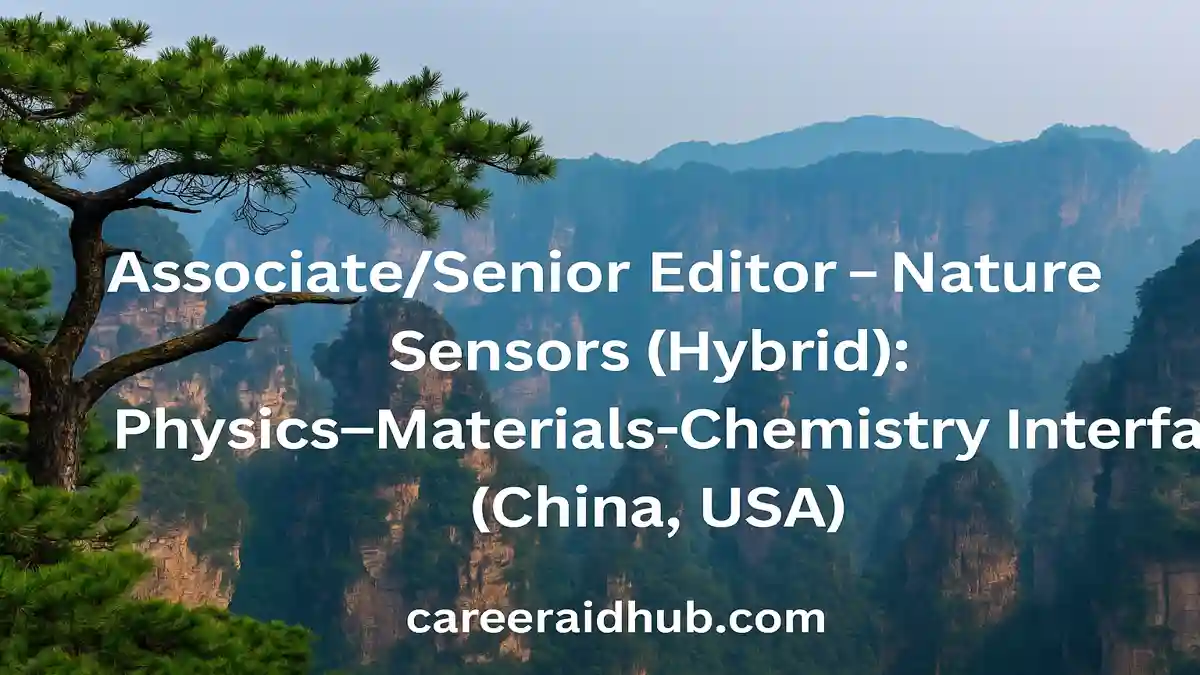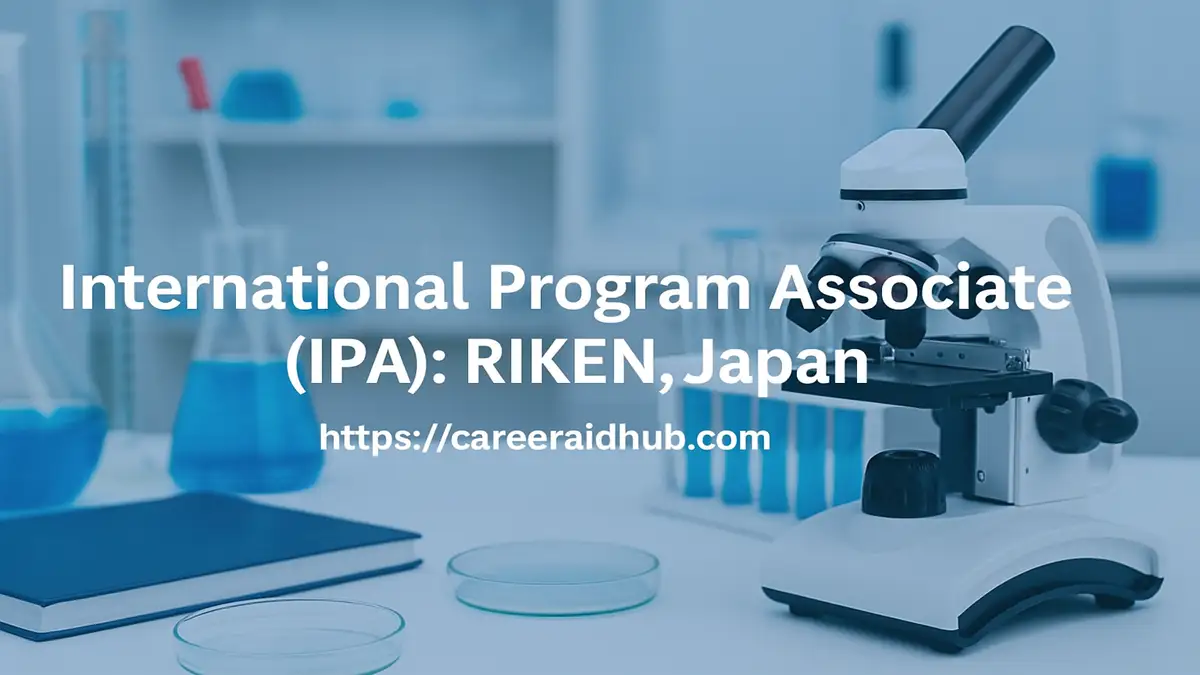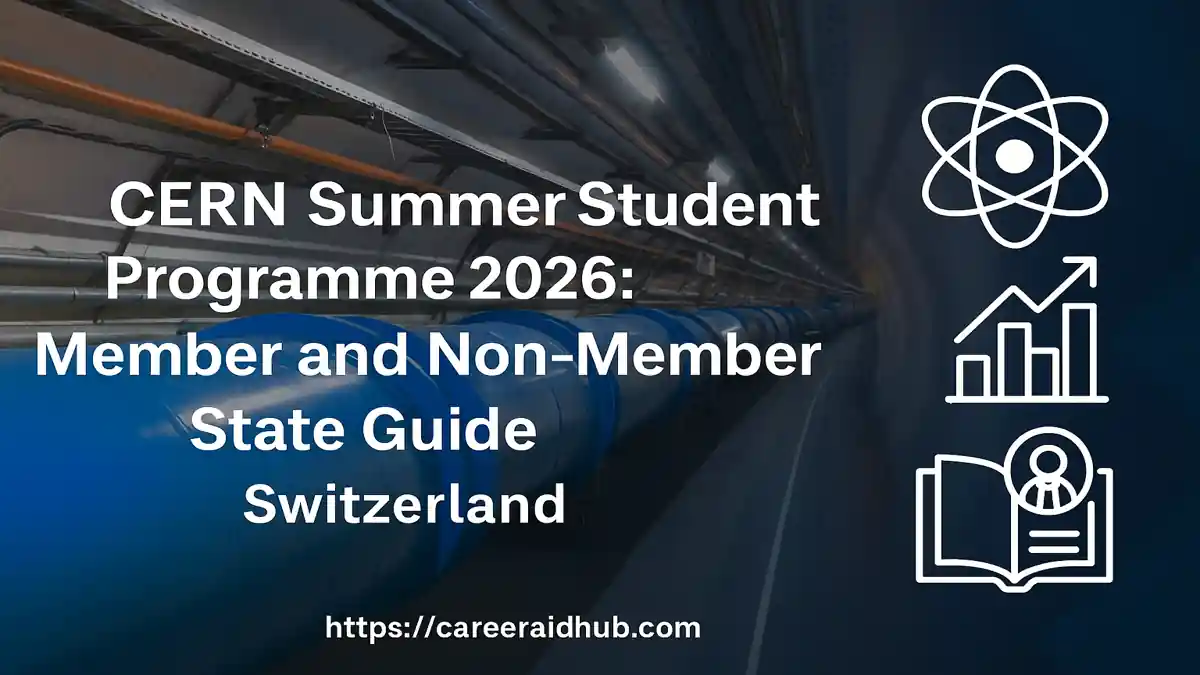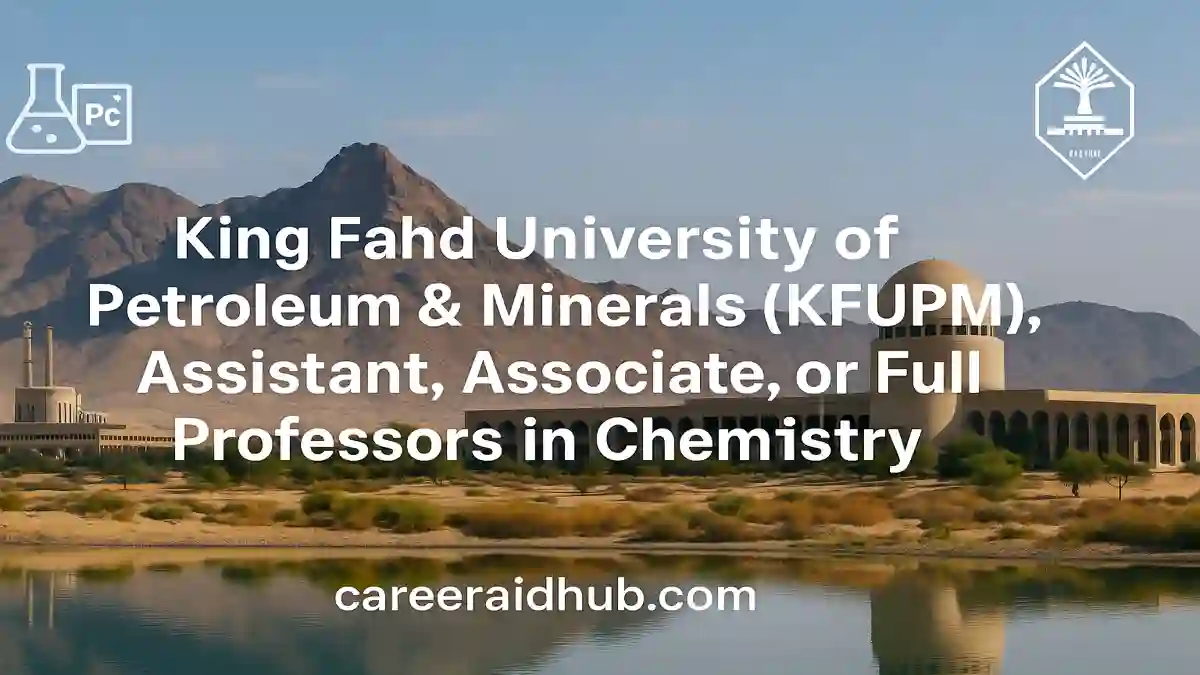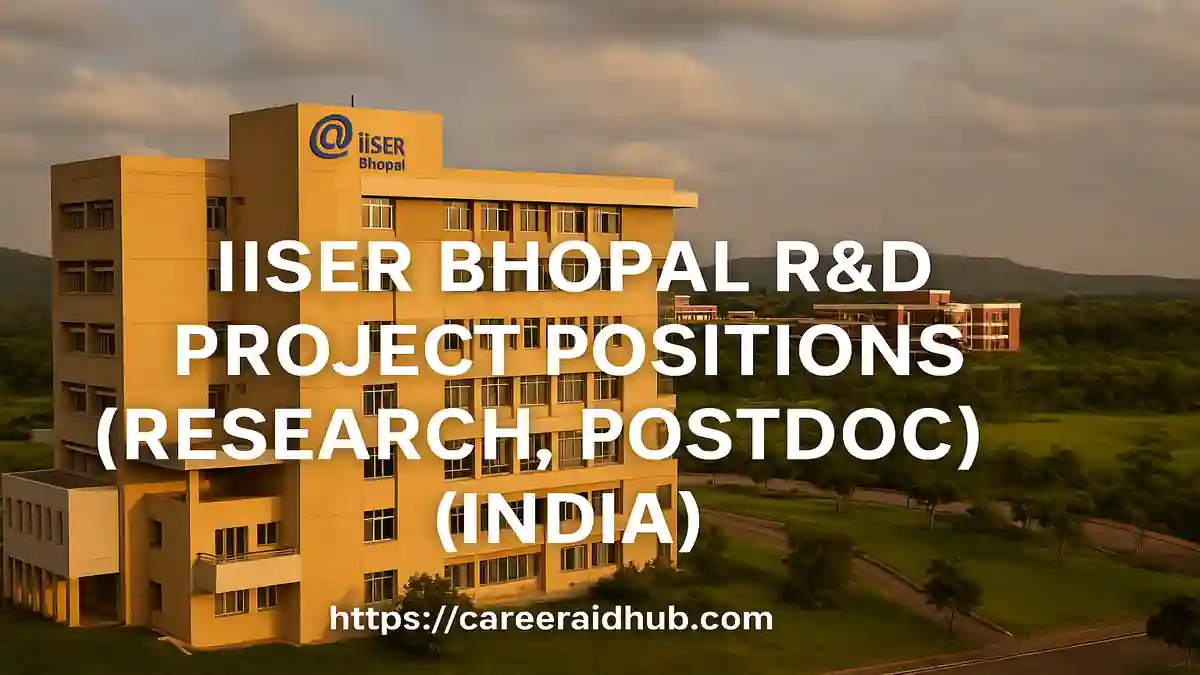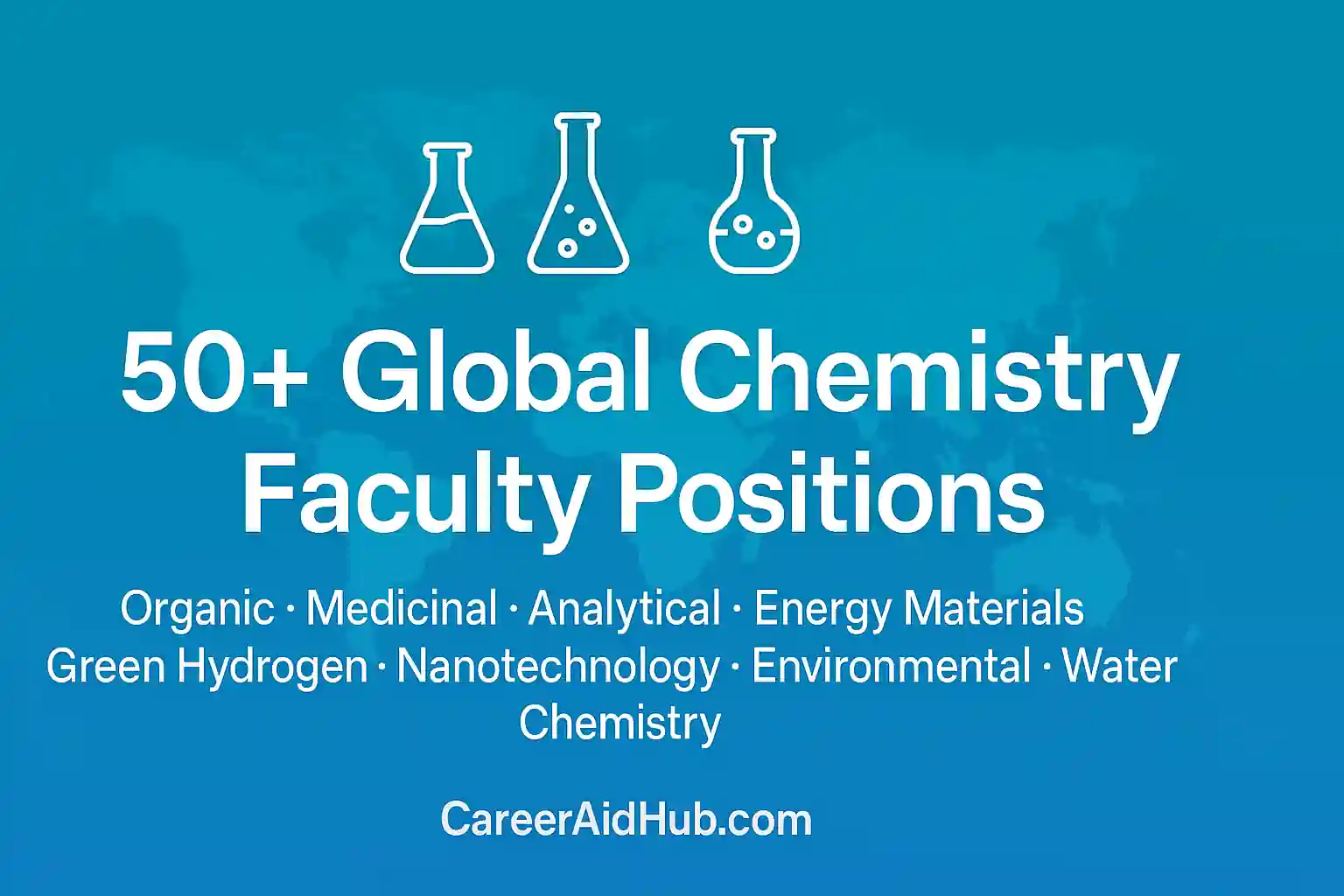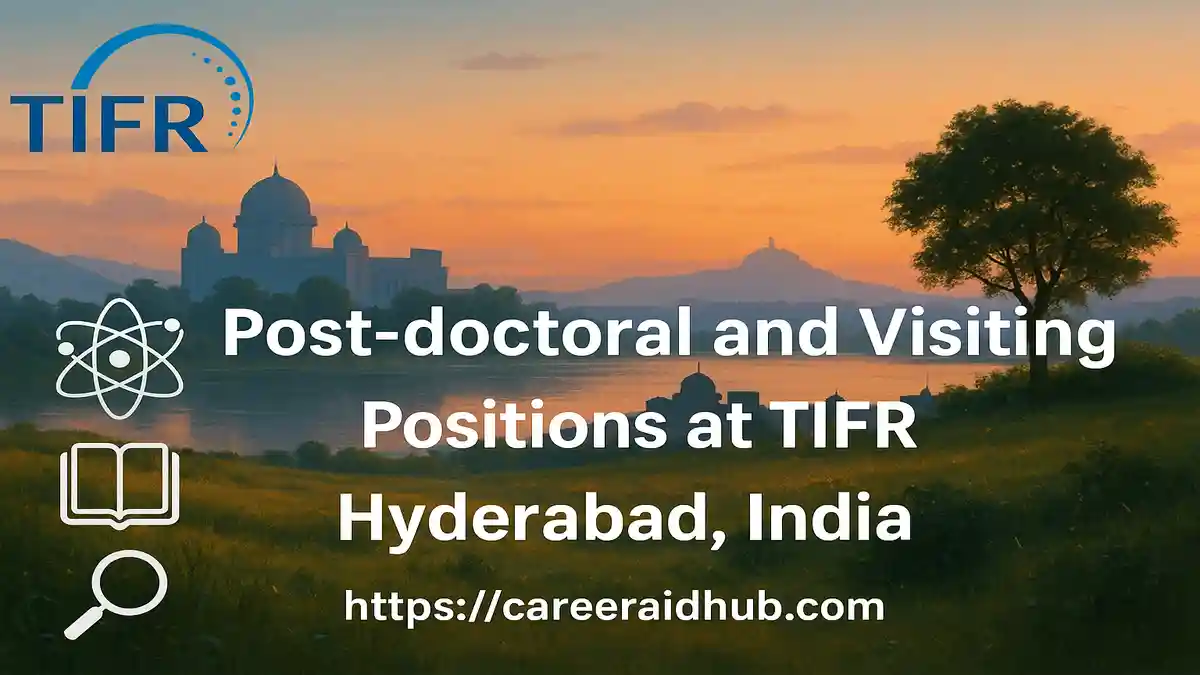Introduction
The rise of advanced sensing technologies at the interface of physics, materials, and chemistry is revolutionizing fields such as healthcare, environmental monitoring, energy systems, and autonomous instrumentation. The Associate/Senior Editor role for Nature Sensors positions you at this nexus, where you will steward peer review, guide editorial direction, and commission critical, field-shaping content. This appointment affords a rare opportunity to influence how next-generation sensor research is curated and disseminated. Springer Nature’s Careers page provides the formal context for this role.
If you are a scientist with cross-disciplinary sensibilities, a strong editorial instinct, and a vision for bridging materials and device science, this hybrid position offers a compelling platform for long-term influence.
Employer: Springer Nature (Nature Portfolio)
Locations: Shanghai / Beijing / New York (Hybrid)
Role Focus: Handle peer review and editorial decisions for research on sensors at the physics–materials–chemistry interface, along with commissioning and content development
Application Deadline: 31 Oct 2025
Role Snapshot: Core Responsibilities
End-to-End Peer Review Management
You will oversee the full lifecycle of manuscript handling. This includes triage (initial screening of manuscripts for fit, novelty, and rigor), reviewer selection (finding and securing expert assessments), consolidation of referee reports, and issuing clear and fair editorial decisions (accept, revise, or reject). Every decision should be backed
Commissioning & Content Strategy
Beyond managing submissions, you will proactively commission Reviews, Perspectives, Commentaries, and special themed collections. You will scout emerging areas—such as 2D materials for sensing, metal-organic frameworks (MOFs), hybrid organic–inorganic interfaces, plasmonic sensors, flexible/bio-integrated sensing, AI-enhanced transduction, and quantum/single-molecule detection—and invite authoritative voices to contribute. Special collections may revolve around “AI-driven sensor materials,” “green fabrication for wearable devices,” or “single-molecule detection in biological environments.”
Shaping the Journal’s Scope & Voice
Collaboration with the Chief Editor and the wider Nature editorial network is vital. You will help refine the journal’s aims and scope, maintain thematic balance across disciplines (physics, chemistry, materials), and ensure broad representation of applications in healthcare, environment, robotics, agri-tech, energy, and space.
Building the Author & Reviewer Ecosystem
You will cultivate strong relationships with research groups through conferences, lab visits, and virtual outreach. Recruiting and retaining a high-quality, diverse reviewer pool will be part of your mandate. You will advocate for best practices in data sharing, reproducibility, open science, and transparency across submissions.
Enhancing Discoverability & Quality
You will shape headlines, summaries, and web copy to underscore each
Upholding Research Integrity
Enforcement of Nature Portfolio policies on ethics, image screening, competing interests, and data availability lies at the heart of this role. You will analyze and escalate any integrity concerns, applying judgments fairly and transparently.
Who Should Apply: Desired Profile & Expertise
Educational & Research Credentials
A PhD or equivalent experience in materials science, applied or condensed-matter physics, physical/analytical chemistry, electrical or biomedical engineering is strongly preferred. You should have a demonstrable track record in sensor research or related interdisciplinary areas.
Technical Breadth & Depth
You must possess broad fluency in sensor materials, device architectures, transduction mechanisms, micro/nanofabrication, and characterization techniques. Your experience should span applications—for example, wearable biosensors, environmental gas sensing, photonic sensors, or quantum sensing.
Editorial & Critical Judgment
You should have editorial instincts: the ability to rapidly assess novelty, significance, and methodological soundness. Your decision letters should be clear, fair, and provide constructive guidance. Prior peer review
Communication, Organization & Collaboration
Excellent writing, diplomatic correspondence, and confident public speaking are essential. You must manage a busy pipeline of manuscripts with precision, deadlines, and fairness. You should be comfortable collaborating across time zones with an international team.
Added Advantages
Postdoctoral or industry experience in sensing is beneficial. Active community engagement—organizing workshops, guest-editing, mentoring—will help you stand out.
Applicants from both academia and industry are welcome. Comprehensive editorial training will be provided.
What Makes This Role Attractive
Strategic Viewpoint
You will engage with cutting-edge research across subfields and geographies before the wider community sees it. This vantage embeds you at the leading edge of sensor innovation.
Intellectual Diversity
One day you might evaluate an electrochemical biosensor manuscript; the next day, review a quantum photonic sensor. The variety keeps the role intellectually stimulating.
Community Influence
You will set norms of rigor, transparency, and reproducibility that shape the next generation of sensor science.
Career Trajectory
Nature Portfolio offers structured training, mentorship, and pathways to senior editorial leadership and cross-journal initiatives.
Hybrid Flexibility & Global
Reach
You may work from Shanghai, Beijing, or New York, with hybrid flexibility and opportunities for travel to conferences and labs worldwide.
A Day in the Life: Workflow Overview
-
- Morning triage: You screen new submissions for scope, novelty, methodological robustness, and potential impact.
- Reviewer selection: You match manuscripts to reviewers, balancing expertise, diversity, and time sensitivity.
- Decision drafting: You integrate referee feedback with your evaluation to craft clear, actionable decision letters.
- Commissioning & planning: You identify authors for high-impact commissioned content and plan themed collections.
- Community engagement: You attend seminars, respond to presubmission inquiries, and plan conference participation.
- Team sync: You meet with the Chief Editor and colleagues to calibrate standards, policy updates, and content priorities.
Application Essentials
How to Apply
Submit your application through Springer Nature Workday (official) by searching “Associate/Senior Editor – Nature Sensors” and selecting your preferred base—Shanghai, Beijing, or New York.
Deadline
31 Oct 2025 (applying early is strongly encouraged).
Application Materials
-
- A CV highlighting research contributions, peer-review/editing experience, and community service.
- A cover letter articulating your fit, editorial vision, and ideas for commissioning.
- Writing samples (optional but beneficial) such as reviews, perspectives, or outreach articles illustrating clarity and synthesis.
Application Tip
In your cover letter, showcase both breadth (e.g., electrochemical, photonic, piezoelectric, optomechanical) and depth (1–2 specializations). Include a shortlist of commissionable topics to demonstrate your trend awareness.
How to Stand Out
-
- Demonstrated cross-disciplinary arc: from materials synthesis to device integration to validated applications.
- A strong integrity record: experience in reproducible science, data/code sharing, or preregistration.
- Community leadership: organizing sessions, guest editing, mentoring early-career scholars.
- Empathetic rigor: decision letters that critique firmly but supportively.
About Nature Sensors and Portfolio Context
Nature Sensors aims to publish transformative sensor research spanning materials (e.g., 2D, hybrid, porous systems), device physics (plasmonics, photonics, quantum), interface chemistry, micro/nanofabrication, transduction (electrochemical, optical, piezoelectric, magnetoresistive), packaging and integration (flexible, bio-conformal), algorithms/signal processing, and demonstrator applications in health, environment, energy, and beyond.
As part of the Nature Portfolio, it benefits from established editorial practices, visibility, and a global researcher network, while retaining agility suited to fast-evolving fields. The journal was officially announced in a press release by Springer Nature as a new selective sensor title.
Call to Action (CTA)
Are you ready to help define the future of sensor science? Visit Springer Nature Workday, search Associate/Senior Editor – Nature Sensors, select your base, and submit your application before 31 Oct 2025.
Conclusion
This role offers a rare blend of scientific influence and editorial leadership. As an Associate/Senior Editor for Nature Sensors, you will guide the peer-review process, commission seminal content, and shape the journal’s voice—positioning it at the forefront of sensor science. If you are ready to elevate research across physics, materials, and chemistry into global visibility, we encourage you to apply via Springer Nature Workday before 31 Oct 2025. In a related move, many leading universities now host editorial offices or support roles in publishing to strengthen scholarly communication capabilities (for example, editorial fellowships at the University of Oxford’s Publishing division).
We look forward to seeing applications from bold, thoughtful, and multidisciplinary scientists who share this vision.
Quick Summary Table
|
Item |
Details |
|
Title |
Associate/Senior Editor – Nature Sensors (Hybrid) |
|
Employer |
Springer Nature (Nature Portfolio) |
|
Locations |
Shanghai · Beijing · New York |
|
Work Mode |
Hybrid (office-linked with remote flexibility) |
|
Focus Area |
Sensors at the physics–materials–chemistry interface |
|
Responsibilities |
Manage peer review; make editorial decisions; commission Reviews/Perspectives; develop special collections; uphold research integrity; improve discoverability |
|
Typical Topics |
2D materials, MOFs/COFs, hybrid interfaces, plasmonics/photonic sensing, electrochemical transduction, micro/nanofabrication, wearable/bio-integrated sensors, AI-driven and quantum sensing |
|
Who Should Apply |
PhD (or equivalent) in materials science, physics, chemistry, or engineering; strong sensor background; excellent writing and judgment; collaborative mindset |
|
Nice-to-Haves |
Postdoctoral or industry experience; prior editorial/guest editing; active reviewer track record |
|
Key Skills |
Critical evaluation, clear decision writing, stakeholder communication, community building, time management |
|
Why It’s Attractive |
Strategic view of cutting-edge research; broad intellectual variety; community impact; training and advancement within Nature Portfolio |
|
Day-to-Day |
Morning triage → reviewer selection → decision letters → commissioning/planning → community engagement → team sync |
|
Application Portal |
Springer Nature Workday (official) |
|
Deadline |
31 Oct (apply early) |
|
How to Stand Out |
Show breadth + depth across sensing; propose commissionable topics; demonstrate integrity and mentorship/community leadership |
|
Keywords (SEO) |
associate senior editor nature sensors, editorial jobs sensors, Springer Nature editor hybrid, peer review editor materials chemistry |
Frequently Asked Questions (FAQs)
They manage the peer-review process, commission new content, and shape the journal’s editorial direction across physics, materials science, and chemistry-based sensor research.
You can apply through Springer Nature Workday, selecting your preferred base location (Shanghai, Beijing, or New York).
A PhD or equivalent experience in materials science, applied physics, chemistry, or engineering, with demonstrated expertise in sensor technology, is typically required.
A PhD or equivalent experience in materials science, applied physics, chemistry, or engineering, with demonstrated expertise in sensor technology, is typically required.
The journal covers sensing innovations in materials science, device physics, nanotechnology, photonics, electrochemistry, and quantum sensing.
The current application cycle closes in October 2025, and the next cycle is expected to open in October 2026. Updates will follow soon.
Yes. Editors can work in a hybrid mode, combining office and remote work, depending on the selected location and team requirements.
Strong analytical ability, communication skills, interdisciplinary research experience, and the capacity to assess high-impact manuscripts are key differentiators.
Editors can progress to Senior Editor, Chief Editor, or Editorial Director roles, supported by mentorship and global professional development programs.
Premium Mentorship for a Stronger Application
- Premium Mentorship: personalised 1:1 guidance for this and similar opportunities
- In-depth review of your CV, academic profile, and key statements
- Aligned with international selection criteria so your profile matches what panels expect
- Stronger, more compelling narrative for highly competitive calls
- Step-by-step support from opportunity mapping to final submission (fee-based)

